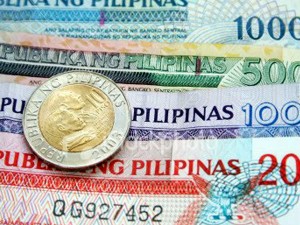ING warns of risks in SDA funds release

Funds that are starting to flow out of the central bank’s special deposit accounts have helped stabilize local financial markets that were recently rocked by external shocks, financial giant ING said.
MANILA, Philippines—Funds that are starting to flow out of the central bank’s special deposit accounts (SDA) have helped stabilize local financial markets that were recently rocked by external shocks, financial giant ING said.
However, in a research note released Friday, ING warned that while funds released from SDAs could help spur economic growth, the flood of money could also lead to higher consumer prices that the Bangko Sentral ng Pilipinas (BSP) would have to address.
ING senior economist Joey Cuyegkeng said in his note to clients that around P400 billion in funds currently parked in SDA accounts were expected to shift to other financial assets by the end of July. This is the BSP’s deadline for the phaseout of 30 percent of all retail investments in SDAs. By November, the remaining 70 percent would also have to be pulled out, the BSP earlier said.
Money in SDAs currently total P1.8 trillion, or lower than the peak of more than P2 trillion seen earlier this year.
The funds that have started to flow out of SDAs were “being invested in banks’ money-market of short-term unit investment trust funds (UITFs) and banks’ deposits,” Cuyegkeng said.
Article continues after this advertisement“The local bond and equity markets would also benefit from the SDA phaseout, a much-needed boost for these markets, which have lately been on a roller-coaster ride due to mixed reactions on the US Federal Reserve’s economic stimulus plan,” he said.
Article continues after this advertisementSDAs were originally conceived as a tool that would let the BSP mop up excess liquidity from the economy by offering a new high-yield and risk-free window for money to flow into. Lately, however, banks have parked funds in SDAs to take advantage of the better yields as returns on government securities fell to record lows. This forced the BSP to restrict access to SDAs only to trust accounts of banks.
By the end of November, the next BSP deadline for the SDA phaseout, expect another P1 trillion to move to trust funds, said Cuyegkeng. “Like this first migration, a large portion of the P1 trillion in SDAs would end up in banks’ UITFs with a bias for money-market or short-term UITFs and deposit products,” he said.
While freeing up the SDA funds would give markets a boost, the ING economist said it also has a downside: “The (fund) migration would likely raise domestic liquidity growth to around 20 percent or more within the next 12 months, which may bring about higher inflation expectations for late 2014 and for 2015.”
However, inflation this year and for most of 2014 would likely be in line with BSP inflation forecasts, he said.